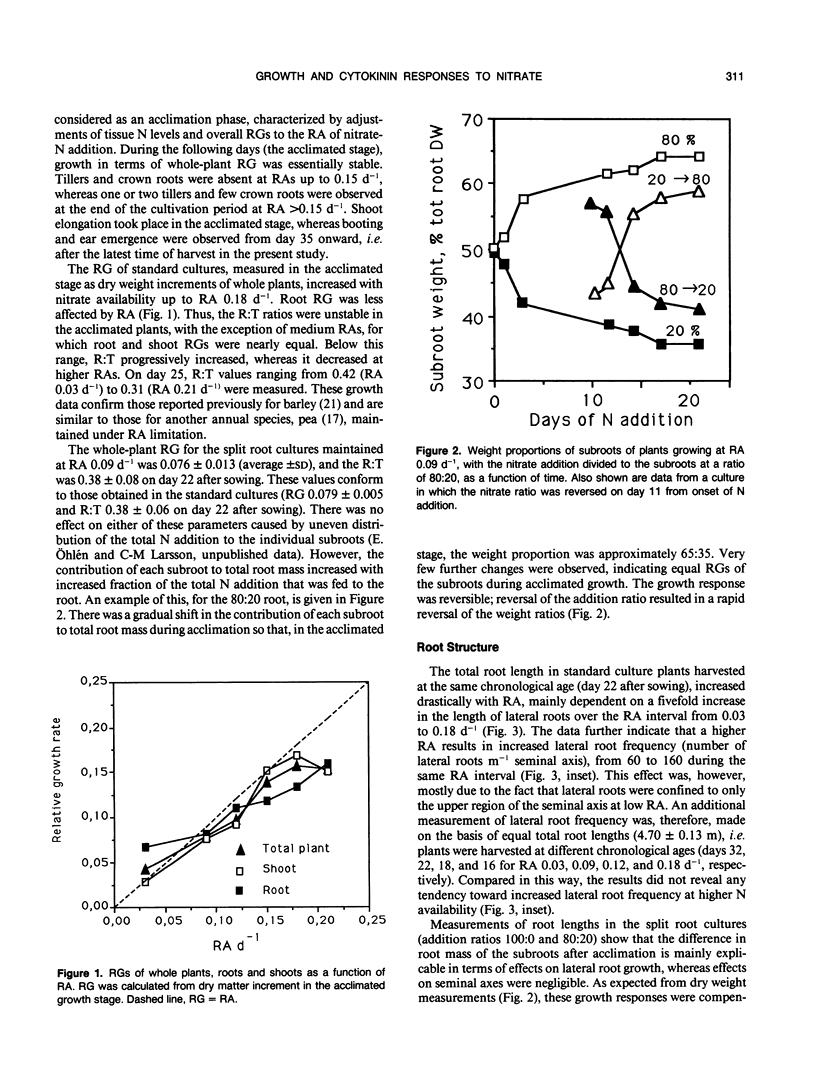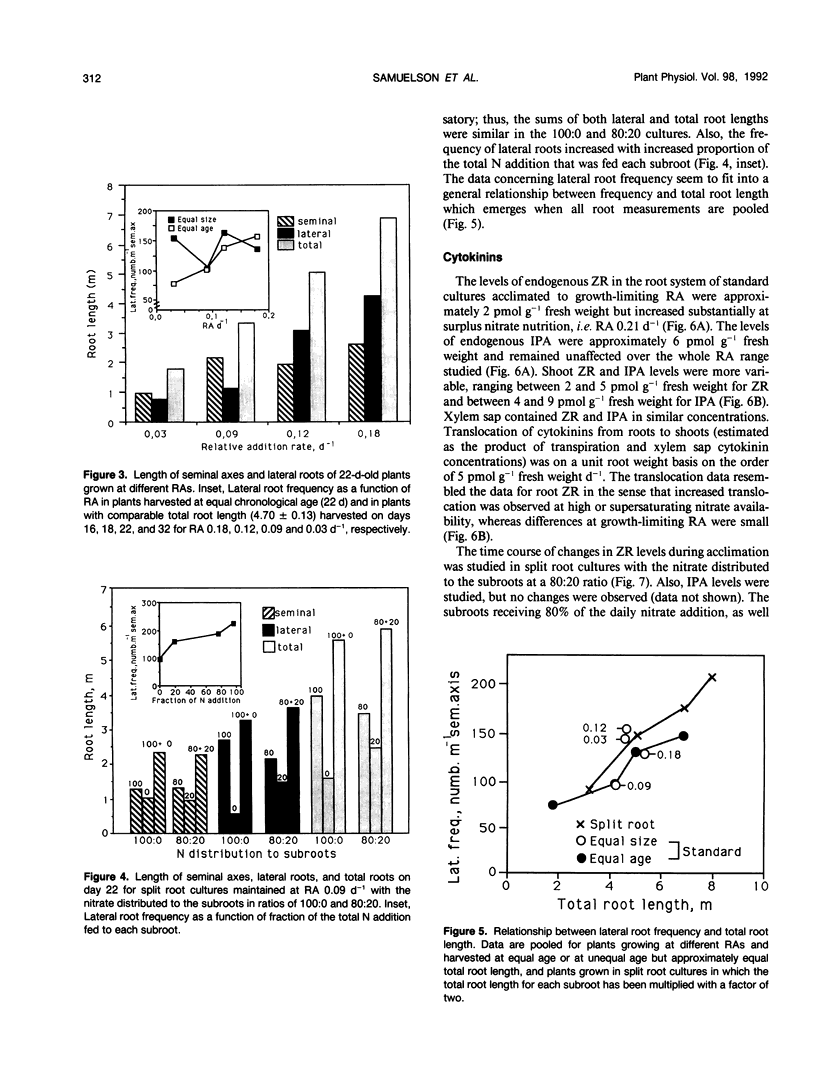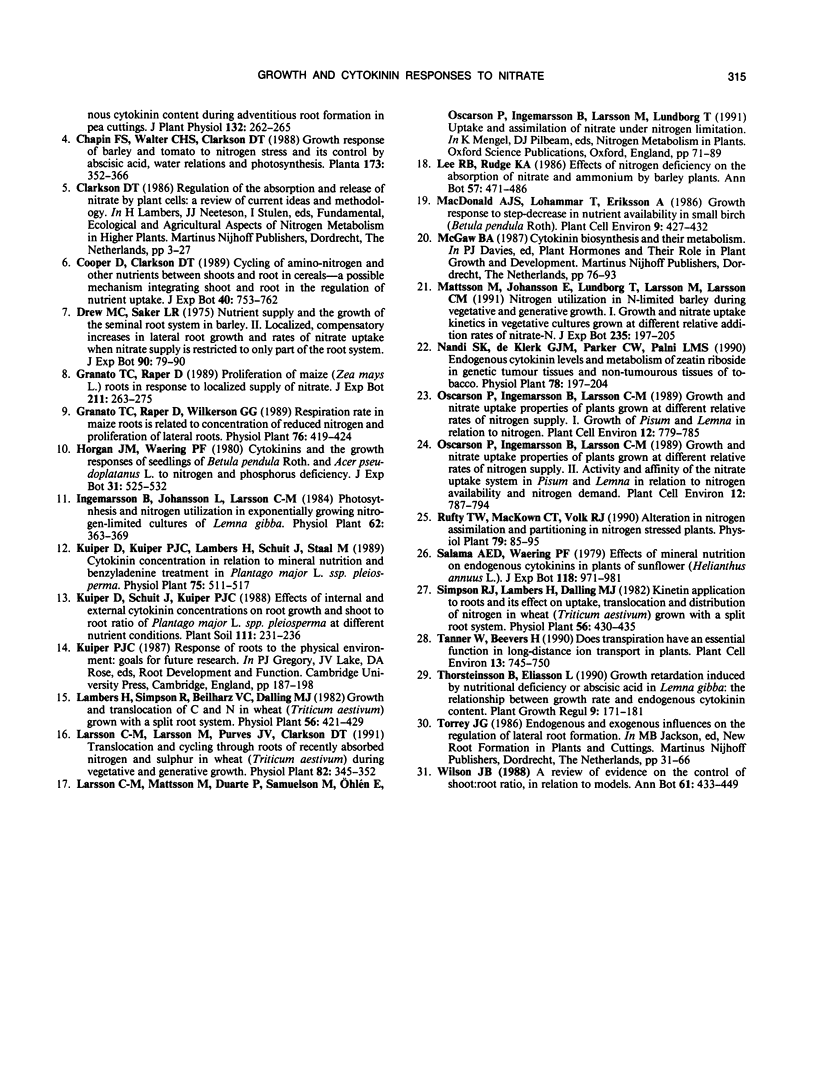Abstract
The influence of nitrate availability on growth of seminal roots, and root cytokinin levels, was studied in barley (Hordeum vulgare L. cv Golf). Nitrate was continuously supplied to initially N-starved seedlings at relative addition rates (RA) of 0.03 to 0.21 per day (standard cultures) or at RA 0.09 per day in split root cultures with the nitrate additions distributed in ratios of 100:0 or 80:20 to the two subroots. Data were collected both during a phase of acclimation (first 10 days of N additions) and in the acclimated stage (>10 days after onset of N additions). Limitation of whole-plant growth was observed at RA <0.15 per day. The lateral root frequency increased with RA in plants of equal chronological age. However, the lateral root frequency was related to root size rather than to RA; roots of uneven age but having comparable total root lengths also had comparable lateral root frequencies. Growth of individual subroots in split root systems during acclimation was proportional to the fraction of the total N addition that was fed to the root. All subroots had comparable relative growth rates in acclimated plants, and their lateral root frequency correlated with total root length in the same manner as in standard cultures. Onset of N additions in a 80:20 split root culture resulted in doublings of zeatin riboside (ZR) levels in shoots and in the “80” root, whereas the response of the “20” root was small. No effect of perturbed nitrate availability on xylem translocation of ZR was observed. The ZR levels remained higher in the “80” root during acclimation but returned to the level of the “20” root after acclimation. Root cytokinin levels and xylem translocation in acclimated standard cultures were unaffected by RA in the lower range but increased at high RA. Arguments for involvement of cytokinins in the nitrate-regulated growth response are discussed.
Full text
PDF






Selected References
These references are in PubMed. This may not be the complete list of references from this article.
- Granato T. C., Raper C. D., Jr Proliferation of maize (Zea mays L.) roots in response to localized supply of nitrate. J Exp Bot. 1989 Feb;40(211):263–275. doi: 10.1093/jxb/40.2.263. [DOI] [PubMed] [Google Scholar]
- Granato T. C., Raper C. D., Jr, Wilkerson G. G. Respiration rate in maize roots is related to concentration of reduced nitrogen and proliferation of lateral roots. Physiol Plant. 1989;76:419–424. doi: 10.1111/j.1399-3054.1989.tb06213.x. [DOI] [PubMed] [Google Scholar]


